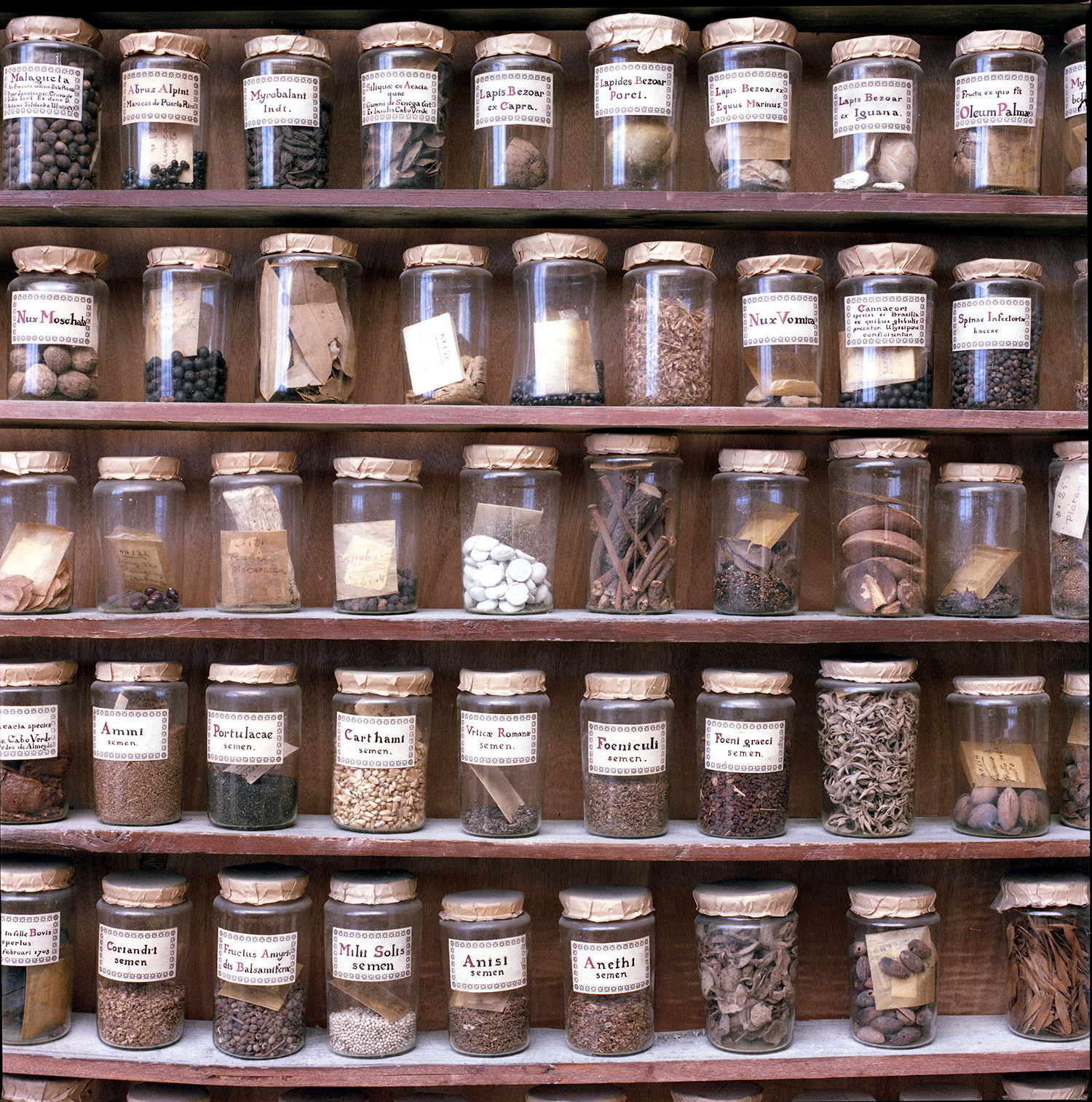The small glass jar containing our Bezoar Stone specimen was kept in a splendid cupboard containing some five hundred similar jars in the Salvador Cabinet in Barcelona. It took its place beside objects with labels such as Pedra Bezoardica, Lapides Bezoar Porci, Lapis Bezoar Orientalis, Lapides Isti Reperti in Pene Suis, Lapis Bezoar ex Equus Marinus, Bezoar de Serpiente, Lapis Bezoar ex Capra, and so on. The cupboard of the cabinet in question was made by Josep Salvador i Riera (1690–1761), only a few years after Hans Sloane’s notable discussion of bezoars appeared in the Philosophical Transactions of 1749. Sloane had described the ‘Rhinoceros bezoar’ from Mombasa and another stone found ‘in the Head of the most venomous Snake of the East Indies called Cobra de Cabelo’. In a letter to the Royal Society, Sloane relied upon the authority of the Esperienze intorno a diverse cose naturali of Francesco Redi (1686), in which the Tuscan physician expounded his experiments with bezoars of various kinds, including that of the American iguana, as well as other remarkable products of both Indies. In short, that some bezoars found themselves adjacent to others on a reserved shelf in a Barcelona apothecary reflected both the scientific controversies regarding New World nature and the position of its products in an increasingly globalised world shaped by the inseparable duo of the two Indies, first united by Iberian trade and collecting networks.
BEZOAR TRADE AND SCIENCE
Figure 3. Section of the cupboard shelves (courtesy of the Institut Botànic, Barcelona (IBB); photo by N. Hervás).
José Pardo-Tomás
Further reading
- Delbourgo, J. (2018) Collecting the World: The Life and Curiosity of Hans Sloane (London: Penguin Books).
- Egmond, F. (Forthcoming) ‘Plants and medicine’, in A Cultural History of Plants in the Early Modern Period (1400–1650), edited by A. Dalby (London: Bloomsbury, Cultural Histories Series).
- Ibáñez, N., J.M. Camarasa, and E. Garcia (eds.) (2019) El Gabinet Salvador: un tresor científic recuperat (Barcelona: Museu de Ciències Naturals-Institut Botànic).
- MacGregor, A. (ed.) (2018) Naturalists in the Field: Collecting, Recording and Preserving the Natural World from the Fifteenth to the Twenty-First Century (Leiden: Brill).
- Margócsy, D. (2014) Commercial Visions: Science, Trade, and Visual Culture in the Dutch Golden Age (Chicago, IL: University of Chicago Press).
- Morcelli Oliveros, J. (2019) Americana en la rebotica: comercio, redes epistolares y comunicación científica en el Gabinete Salvador (Barcelona, 1669–1726), PhD dissertation (Bellaterra, Universitat Autònoma de Barcelona).
- Pardo-Tomás, J. (2014) Salvadoriana: el gabinet de curiositats de Barcelona; The Cabinet of Curiosities of Barcelona (Barcelona: Ajuntament de Barcelona).
- Stephenson, M. (2010) ‘From marvelous antidote to the poison of idolatry: the transatlantic role of Andean bezoar stones during the late sixteenth and early seventeenth centuries’, Hispanic American Historical Review, 90 (1): 3–39.
- Stols, E., W. Thomas, and J. Verbeckmoes (eds.) (2006) Naturalia, mirabilia & monstrosa en los Imperios Ibéricos (siglos XV–XIX) (Leuven: Leuven University Press).
- Walker, A., A. MacGregor, and M. Hunter (eds.) (2012) From Books to Bezoars: Sir Hans Sloane and His Collections (London: British Library).
- Yaya, I.M. (2008) ‘Wonders of America: the curiosity cabinet as a site of representation and knowledge’, Journal of the History of Collections, 20 (2): 173–88.





